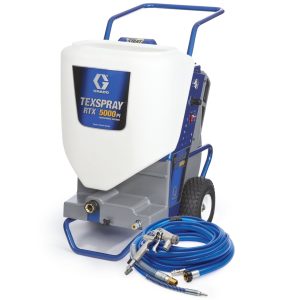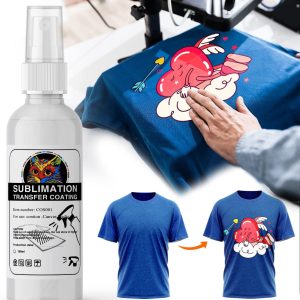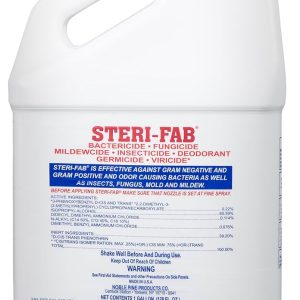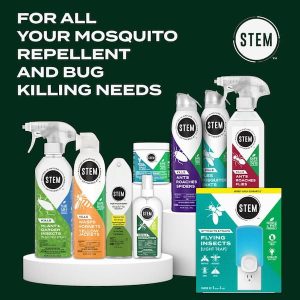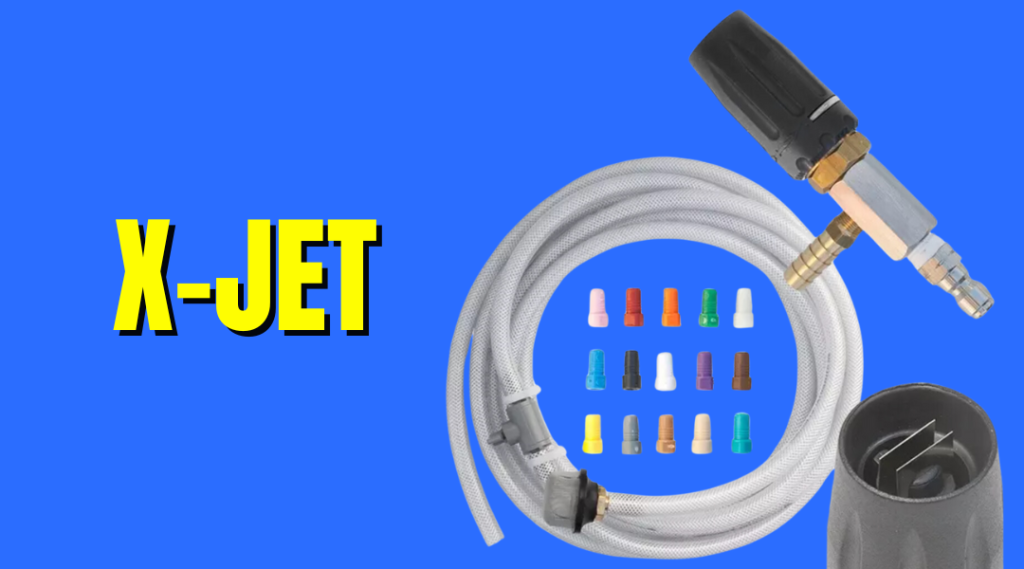
What is Jet Spray Technology and Why It Matters?
Jet spray technology represents one of the most effective cleaning solutions available in today’s industrial and residential markets. This powerful cleaning method utilizes high-pressure water streams to remove stubborn contaminants, dirt, and debris from various surfaces with remarkable efficiency. Unlike traditional cleaning methods, jet spray systems deliver pressurized water at speeds that can range from 750 to 30,000 PSI (pounds per square inch), making them incredibly versatile for different applications.
The fundamental principle behind jet spray technology lies in the conversion of water pressure into kinetic energy. When water is forced through specially designed nozzles at high pressure, it creates a concentrated stream that can break molecular bonds between contaminants and surfaces. This process eliminates the need for harsh chemicals in many applications, making jet spray an environmentally friendly cleaning solution that delivers superior results.
Modern jet spray systems have evolved significantly from their early iterations, incorporating advanced pump technologies, variable pressure controls, and specialized nozzle designs. These improvements have made jet spray equipment more reliable, efficient, and suitable for a broader range of applications than ever before. The technology has become an essential tool across multiple industries, from automotive cleaning to industrial maintenance and residential property care.
How Jet Spray Systems Work: The Science Behind High-Pressure Cleaning
Understanding the mechanics of jet spray systems is crucial for maximizing their effectiveness and ensuring optimal performance. The core components of any jet spray system include a high-pressure pump, motor or engine, pressure regulator, hose assembly, and specialized nozzles. Each component plays a vital role in creating the powerful cleaning force that makes jet spray technology so effective.
The high-pressure pump serves as the heart of the system, drawing water from a source and pressurizing it to the desired level. Modern pumps utilize either axial cam or triplex plunger designs, with triplex pumps generally offering greater durability and consistent pressure output. The pump’s ability to maintain steady pressure is critical for achieving uniform cleaning results across different surface types and contamination levels.
Nozzle technology represents perhaps the most critical aspect of jet spray performance. Different nozzle designs create various spray patterns, including hollow cone, full cone, flat fan, and solid stream configurations. Each pattern serves specific cleaning purposes, with narrow-angle nozzles providing maximum impact force for stubborn stains, while wider-angle nozzles cover larger areas more efficiently. The selection of appropriate nozzle types can significantly impact cleaning speed, water consumption, and overall effectiveness.
Temperature control adds another dimension to jet spray effectiveness. Hot water systems can increase cleaning power by up to 40% compared to cold water applications, particularly when dealing with grease, oil, and organic contaminants. The combination of high pressure and elevated temperature creates a synergistic effect that breaks down contaminants more effectively while reducing the time required for thorough cleaning.
Key Applications of Jet Spray Technology Across Industries
Industrial jet spray applications span numerous sectors, each benefiting from the technology’s unique capabilities. In the automotive industry, jet spray systems excel at removing road grime, salt deposits, and oil stains from vehicles, equipment, and facility floors. The precise control offered by modern systems allows operators to adjust pressure levels for different materials, from delicate automotive finishes to heavy-duty engine components.
Manufacturing facilities rely heavily on jet spray technology for equipment maintenance and facility cleaning. Production lines, conveyor systems, and manufacturing equipment accumulate various contaminants that can affect product quality and operational efficiency. High-pressure jet cleaning provides an effective method for removing these contaminants without disassembling equipment or using harsh chemicals that might damage sensitive components.
The construction industry has embraced jet spray technology for surface preparation, concrete cleaning, and equipment maintenance. Construction sites generate significant amounts of dust, cement residue, and other debris that traditional cleaning methods struggle to address effectively. Jet spray systems can remove these contaminants quickly and thoroughly, preparing surfaces for painting, sealing, or other finishing work.
Food processing facilities represent another critical application area where jet spray technology provides essential cleaning capabilities. The food industry’s strict hygiene requirements demand cleaning methods that can eliminate bacteria, food particles, and other contaminants without leaving chemical residues. Jet spray systems using hot water can achieve the high sanitation standards required while maintaining efficiency and reducing water consumption compared to traditional cleaning methods.
Types of Jet Spray Equipment and Their Specific Uses
Electric jet spray systems offer several advantages for indoor applications and situations where noise levels must be minimized. These systems typically provide consistent pressure output and require less maintenance than gas-powered alternatives. Electric models excel in applications where portability is less critical, such as fixed cleaning stations or workshop environments. The instant start capability and quiet operation make electric jet spray units ideal for residential use and noise-sensitive commercial environments.
Gas-powered jet spray units deliver superior mobility and higher pressure capabilities, making them essential for outdoor applications and heavy-duty cleaning tasks. These systems can achieve pressures exceeding 4000 PSI while maintaining portability across large work sites. Gas-powered units prove particularly valuable in construction, landscaping, and industrial maintenance applications where electrical power may not be readily available.
Hot water jet spray systems represent the premium tier of cleaning equipment, combining high pressure with heated water to maximize cleaning effectiveness. These systems incorporate heating elements or burner assemblies that can raise water temperatures to 200°F or higher. The combination of heat and pressure creates a powerful cleaning force capable of tackling the most challenging contamination scenarios, from heavy grease deposits to biological fouling.
Cold water jet spray units provide cost-effective cleaning solutions for many applications where heat is not required. These systems offer lower operational costs and simpler maintenance requirements while delivering excellent results on dirt, mud, and other common contaminants. Cold water systems remain the preferred choice for many routine cleaning tasks and budget-conscious operations.
Advantages and Benefits of Using Jet Spray Technology
The efficiency advantages of jet spray cleaning extend far beyond simple time savings, though the speed improvement is often dramatic. Traditional cleaning methods might require hours of manual scrubbing to achieve results that jet spray systems accomplish in minutes. This efficiency translates directly into labor cost savings, reduced operational downtime, and increased productivity across various applications.
Environmental benefits of jet spray technology make it an attractive option for organizations focused on sustainability. By eliminating or reducing the need for chemical cleaning agents, jet spray systems minimize environmental impact while maintaining superior cleaning results. The water-only cleaning approach eliminates concerns about chemical disposal, reduces groundwater contamination risks, and supports green building certification requirements.
Cost-effectiveness represents another compelling advantage of jet spray technology. While initial equipment investment may be higher than traditional cleaning tools, the long-term operational savings are substantial. Reduced labor requirements, elimination of chemical costs, and decreased water consumption contribute to favorable return on investment calculations. Many organizations recover their initial investment within the first year of operation through reduced cleaning costs and improved operational efficiency.
Versatility sets jet spray technology apart from specialized cleaning methods. A single jet spray system can handle multiple cleaning tasks across different surfaces and contamination types. This versatility reduces equipment inventory requirements and simplifies training needs while providing consistent results across various applications.
The precision control offered by modern jet spray systems allows operators to adjust pressure, flow rate, and spray pattern to match specific cleaning requirements. This capability prevents surface damage while ensuring thorough cleaning, making jet spray suitable for both delicate and heavy-duty applications.
Safety Considerations and Best Practices for Jet Spray Operations
Jet spray safety protocols are essential for preventing injuries and equipment damage during cleaning operations. High-pressure water streams can cause serious injuries if proper precautions are not followed. Operators must wear appropriate personal protective equipment, including safety glasses, protective clothing, and non-slip footwear. The powerful force generated by jet spray systems can cause serious cuts, injection injuries, or eye damage if safety guidelines are ignored.
Proper training forms the foundation of safe jet spray operations. Operators must understand equipment capabilities, pressure limitations, and appropriate techniques for different applications. Training programs should cover equipment operation, maintenance procedures, safety protocols, and emergency response measures. Regular refresher training ensures operators stay current with best practices and safety requirements.
Equipment maintenance plays a crucial role in safe and effective jet spray operations. Regular inspection of hoses, fittings, and nozzles prevents failures that could result in injuries or property damage. High-pressure systems require specific maintenance procedures, including pressure relief before disconnecting components and proper storage to prevent freeze damage.
Surface assessment before beginning cleaning operations helps prevent damage and ensures appropriate pressure settings. Different materials require different pressure levels and techniques to avoid surface damage while achieving effective cleaning. Understanding surface limitations helps operators select appropriate nozzles and pressure settings for optimal results.
Maintenance and Care Tips for Jet Spray Equipment
Routine maintenance schedules are critical for maintaining jet spray system performance and extending equipment life. Daily maintenance should include visual inspection of hoses, fittings, and nozzles for signs of wear or damage. Operators should check oil levels, inspect air filters, and ensure proper fuel levels before each use. These simple checks prevent major problems and ensure consistent performance.
Pump maintenance requires particular attention due to the high-pressure environment in which these components operate. Regular oil changes, valve inspection, and seal replacement prevent costly pump failures and maintain optimal pressure output. Pump manufacturers provide specific maintenance schedules that should be followed carefully to maintain warranty coverage and ensure reliable operation.
Seasonal maintenance becomes critical in regions where freezing temperatures occur. Proper winterization procedures prevent freeze damage that can destroy pumps, hoses, and other system components. This includes draining all water from the system, adding antifreeze where appropriate, and storing equipment in temperature-controlled environments when possible.
Nozzle care directly impacts cleaning effectiveness and system longevity. Worn or damaged nozzles can create uneven spray patterns, reduce cleaning effectiveness, and increase operating pressures that stress other system components. Regular nozzle inspection and replacement maintain optimal performance while preventing unnecessary wear on pumps and other components.
Choosing the Right Jet Spray System for Your Needs
Application requirements should drive jet spray system selection decisions. Different cleaning tasks require different pressure levels, flow rates, and temperature capabilities. Light-duty residential cleaning may require only 1500-2000 PSI, while heavy industrial cleaning might demand 4000 PSI or higher. Understanding specific application requirements ensures appropriate system selection and optimal performance.
Power source considerations affect both initial cost and operational flexibility. Electric systems offer convenience and lower operational costs but require electrical power availability. Gas-powered systems provide greater mobility and higher pressure capabilities but require fuel and produce emissions. Battery-powered systems offer portability without emissions but may have limited runtime and pressure capabilities.
Flow rate requirements significantly impact cleaning speed and effectiveness. Higher flow rates cover larger areas more quickly but consume more water and require larger supply sources. Applications requiring detailed cleaning may benefit from lower flow rates that provide better control and precision. Matching flow rate capabilities to specific cleaning requirements optimizes both effectiveness and efficiency.
Budget considerations encompass both initial purchase price and ongoing operational costs. While premium systems may require higher initial investment, they often provide better long-term value through improved durability, lower maintenance costs, and greater efficiency. Evaluating total cost of ownership rather than just purchase price leads to better long-term decisions.
Comparing Jet Spray vs. Traditional Cleaning Methods
| Aspect | Jet Spray Technology | Traditional Methods |
|---|---|---|
| Cleaning Speed | 5-10x faster than manual methods | Time-intensive manual labor required |
| Water Usage | 80% less water consumption | High water usage with soaking/scrubbing |
| Chemical Requirements | Minimal or no chemicals needed | Heavy reliance on cleaning chemicals |
| Labor Requirements | Single operator can cover large areas | Multiple workers needed for large projects |
| Surface Damage Risk | Controlled pressure prevents damage | Aggressive scrubbing can damage surfaces |
| Environmental Impact | Minimal chemical runoff | Chemical disposal and contamination concerns |
Case Study: Industrial Facility Transformation with Jet Spray Technology
A major manufacturing facility recently implemented comprehensive jet spray cleaning systems across their 500,000 square foot production facility, resulting in remarkable improvements in both efficiency and cleanliness standards. Prior to implementing jet spray technology, the facility relied on traditional cleaning methods that required 40 hours of labor per week and significant chemical usage.
The implementation process involved installing both portable and fixed jet spray systems throughout the facility. High-traffic production areas received fixed installations with specialized nozzle arrays, while maintenance teams used portable units for equipment cleaning and emergency response situations. The installation required minimal facility modifications and was completed during scheduled maintenance windows.
Results exceeded expectations across all measured categories. Cleaning time decreased by 75%, from 40 hours per week to just 10 hours, while achieving superior cleanliness levels. Chemical usage dropped by 90%, eliminating disposal costs and environmental concerns. Water consumption decreased by 60% despite more frequent cleaning cycles, and worker satisfaction improved significantly due to reduced physical demands.
Cost savings reached $180,000 annually through reduced labor costs, eliminated chemical expenses, and decreased water consumption. The initial investment of $85,000 in jet spray equipment was recovered within six months, with ongoing savings continuing to accumulate. Additional benefits included reduced insurance costs due to improved safety conditions and enhanced facility appearance that impressed customers and auditors.
Future Trends in Jet Spray Technology and Innovation
Smart technology integration represents the next evolution in jet spray systems, with manufacturers incorporating sensors, automated controls, and data collection capabilities. These advanced systems can automatically adjust pressure and flow based on surface conditions, contamination levels, and cleaning requirements. Smart systems also provide predictive maintenance alerts and performance optimization recommendations that extend equipment life and improve cleaning effectiveness.
Eco-friendly innovations continue to drive jet spray technology development, with manufacturers focusing on water conservation, energy efficiency, and sustainable materials. New pump designs reduce energy consumption by up to 30% while maintaining performance levels. Water recycling systems capture and filter cleaning water for reuse, further reducing environmental impact and operational costs.
Specialized applications are driving development of niche jet spray systems designed for specific industries and cleaning challenges. Medical device cleaning, food processing sanitation, and historic preservation represent emerging markets where specialized jet spray systems provide unique advantages over traditional methods. These specialized systems often incorporate precise pressure control, specific temperature management, and contamination prevention features.
Automation integration allows jet spray systems to work within larger automated cleaning and maintenance programs. Robotic systems equipped with jet spray technology can perform routine cleaning tasks with minimal human intervention, improving consistency while reducing labor requirements. These automated systems prove particularly valuable in hazardous environments or areas requiring frequent cleaning cycles.
Economic Impact and ROI of Jet Spray Investment
Return on investment calculations for jet spray systems consistently show positive results across various applications and industries. The primary cost savings come from reduced labor requirements, eliminated chemical costs, and decreased water consumption. Most organizations experience ROI periods of 6-18 months, depending on application intensity and previous cleaning costs.
Productivity improvements extend beyond direct cleaning cost savings to include reduced downtime, improved equipment reliability, and enhanced facility appearance. Clean facilities experience fewer equipment failures, improved worker morale, and better customer impressions. These indirect benefits often exceed direct cost savings in total economic impact.
Long-term cost trends favor jet spray technology due to rising labor costs, increasing chemical prices, and stricter environmental regulations. Organizations implementing jet spray systems position themselves advantageously against these trends while improving operational efficiency and environmental performance.
Scalability benefits allow organizations to expand jet spray capabilities as needs grow without proportional increases in operating costs. Additional equipment purchases provide incremental capacity improvements while existing maintenance expertise and operational knowledge transfer directly to new systems.
Conclusion: Maximizing Your Investment in Jet Spray Technology
Professional jet spray systems offer unmatched cleaning performance, environmental benefits, and economic advantages across numerous applications. The technology’s versatility, efficiency, and effectiveness make it an essential tool for modern cleaning operations, from residential maintenance to heavy industrial applications. Organizations investing in quality jet spray equipment position themselves for improved operational efficiency, reduced environmental impact, and significant cost savings.
The key to successful jet spray implementation lies in proper equipment selection, comprehensive training, and consistent maintenance practices. By understanding application requirements, following safety protocols, and maintaining equipment properly, users can maximize the substantial benefits that jet spray technology provides while ensuring long-term system reliability and performance.
As environmental regulations continue to tighten and operational efficiency becomes increasingly important, jet spray technology represents a forward-thinking investment that delivers immediate benefits while supporting long-term sustainability goals. The combination of superior cleaning performance, reduced environmental impact, and excellent economic returns makes jet spray systems an intelligent choice for organizations committed to operational excellence.
For those considering an upgrade to their current cleaning systems, exploring milwaukee airless sprayer options alongside jet spray technology can provide comprehensive coverage for all your cleaning and coating needs.
Ready to experience the power of professional jet spray technology? Contact our experts today to discuss your specific cleaning challenges and discover how advanced jet spray solutions can transform your operations while delivering exceptional return on investment.
Frequently Asked Questions About Jet Spray Technology
What is the difference between jet spray and pressure washing? Jet spray and pressure washing are essentially the same technology, both utilizing high-pressure water streams for cleaning. Both use high-pressure water to clean surfaces, though some professionals use “jet spray” to refer to higher-pressure applications or specialized nozzle configurations.
How much pressure does a jet spray system need for effective cleaning? Machines that produce pressures from 750 to 30,000 psi (5 to 200 MPa) or more are available, with most applications requiring between 1,500-4,000 PSI. Light residential cleaning needs 1,500-2,000 PSI, while heavy industrial applications may require 4,000+ PSI.
Is jet spray technology environmentally friendly? Yes, jet spray technology is highly environmentally friendly as it typically requires only water for effective cleaning, eliminating the need for harsh chemicals. This reduces groundwater contamination risks and chemical disposal concerns while maintaining superior cleaning results.
What safety precautions are necessary when using jet spray equipment? Essential safety measures include wearing protective equipment (safety glasses, protective clothing, non-slip footwear), proper training on equipment operation, regular maintenance checks, and understanding surface limitations to prevent damage or injury from high-pressure water streams.
How often should jet spray equipment be maintained? Daily visual inspections of hoses, fittings, and nozzles are recommended, with more comprehensive maintenance following manufacturer schedules. This typically includes regular oil changes, valve inspections, seal replacements, and seasonal winterization procedures to prevent freeze damage.
Can jet spray systems be used on all types of surfaces? Jet spray systems are highly versatile but require pressure adjustments for different surfaces. Use a pressure washer with a lower PSI setting (around 1,200 to 1,900 PSI) and a wide spray nozzle for delicate surfaces like vehicle paint, while concrete and metal can handle higher pressures.
What is the typical return on investment for jet spray equipment? Most organizations experience ROI periods of 6-18 months through reduced labor costs, eliminated chemical expenses, and decreased water consumption. The exact timeline depends on application intensity and previous cleaning costs.
Sources:
- Jet Spray Technology Applications – JET-SET Lubrication Systems
- Pressure Washing Fundamentals – Wikipedia Technical Reference
